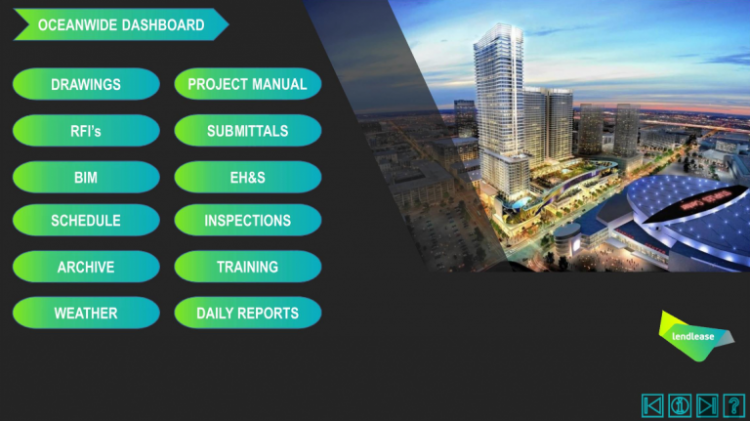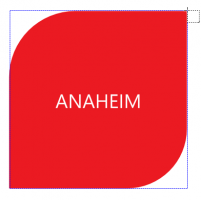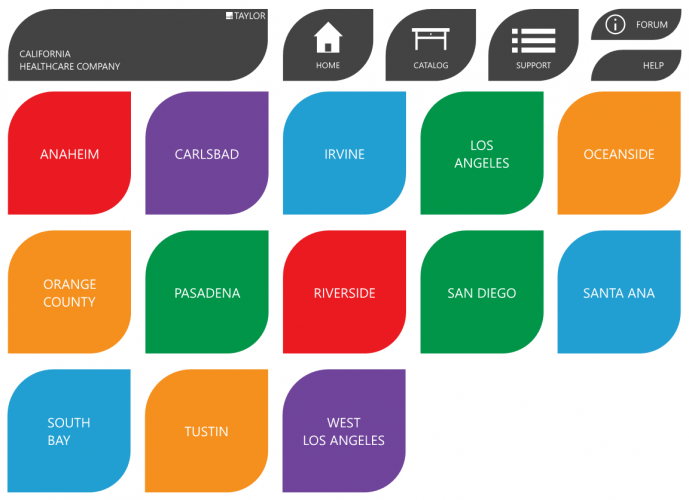Using an older version of Revu?
Applies to:
- Basics
- Core
- Complete
Working on a project can result in a complex folder structure that could be difficult to navigate. Easy file access is crucial, not only in the design and build phases of a project, but during handover and facilities management as well. Whichever phase your project is currently in, digital dashboards can improve project efficiency for your team.
What is a Digital Dashboard?
A digital dashboard is an interactive PDF that includes links to project documents for easy access. They include a home page with top-level links and a series of sub-pages with more focused links.
The example below shows a dashboard home page. It contains links created in Revu that connect to project documents. Since dashboards are built by Revu users, they can be designed for an owner, design team, facilities manager, or whoever might need access to project files. This particular dashboard has links to project drawings, manuals, schedules, submittals, and other relevant information.
How to make a Digital Dashboard

To build your digital dashboard, we recommend to start with the end in mind. Ask yourself: Who will be using the digital dashboard most? If the answer is the owner, an all-encompassing dashboard might be best. If the answer is the facilities manager, then links to warranty information and maintenance manuals might be more relevant.
Create a layout in PowerPoint
While there are many ways to build a digital dashboard, this article will cover how to create a dashboard using Microsoft PowerPoint and its SmartArt tool. The SmartArt tool provides visually appealing graphics with a text overlay that can be quickly edited.
Follow these steps to create a dashboard layout in PowerPoint:
- Open a new slide in PowerPoint.
If you have company-approved PowerPoint presentation slides, you can use those to maintain your brand guidelines. - Go to Insert > SmartArt.
- Select a SmartArt graphic and click OK.
- In the [Text] fields, enter the labels for the buttons that will be on your dashboard and be your links.
- When you’re finished designing your dashboard, save the file as a PDF.
If you’re subscribed to a Core or Complete plan and have the Bluebeam Microsoft Office Plugin installed, go to the Home tab in PowerPoint and select Create PDF. The file should save as a PDF and automatically open in Revu.
Create PDF. The file should save as a PDF and automatically open in Revu.
Add hyperlinks in Revu
Make sure your PDF layout is open in Revu. Then, follow these steps to add hyperlinks:
- Go to Tools >
Hyperlink (Shift + H)
- Click and drag to draw a box around the area that you want your users to click.

- From the Action dialog, create a link to another location in your document, a locally stored file, or to a website. Once you’ve made your selections, select OK to activate your link.
You can see your hyperlink by hovering your cursor over the link you’ve made. Repeat this procedure for each buttons on your dashboard.
All links should be fully functional and maintain their original appearance.
Take your Digital Dashboard to the next level
While the main goal of digital dashboard is to facilitate file access, you can follow these tips to maximize usability, and make your dashboard more user-friendly.
Create a positive user experience
Make your digital dashboard easy to use with visually appealing buttons, intuitive icons, and clear fonts. The dashboard examples pictured above display their branded color palettes, images, and icons for an intuitive experience.
Add a home icon
If your dashboard has multiple pages, consider placing a home link on each page. This allows for quick navigation to top-level links in case the user needs to backtrack.
Keep structure in mind
When making a digital dashboard, it’s a good idea to add links that move from general to specific. Also, remember to keep a consistent folder structure and naming convention for your files.
Avoid broken links
Since digital dashboards can be used for years, it’s a good idea to verify your links. Are your project files constantly being updated or replaced with the latest versions? Create links to a folder that contains the files, rather than to the files themselves, to ensure the links always work. Also, avoid linking to local files on your computer, since users won’t be able to open them.
Set project folder permissions
If you are linking to files in Bluebeam Studio, make sure you set project folder permissions for the dashboard users.
How-To
PDF Management
Interface & Navigation
Working on a project can result in a complex folder structure that may be difficult to navigate. Easy file access is crucial, not only in the design and build phases of a project, but during handover and facilities management as well.


